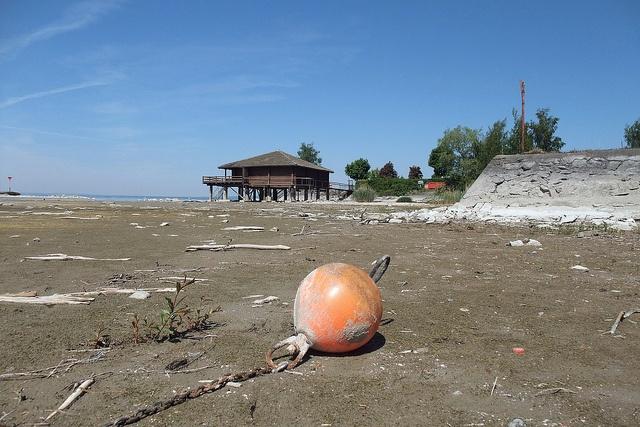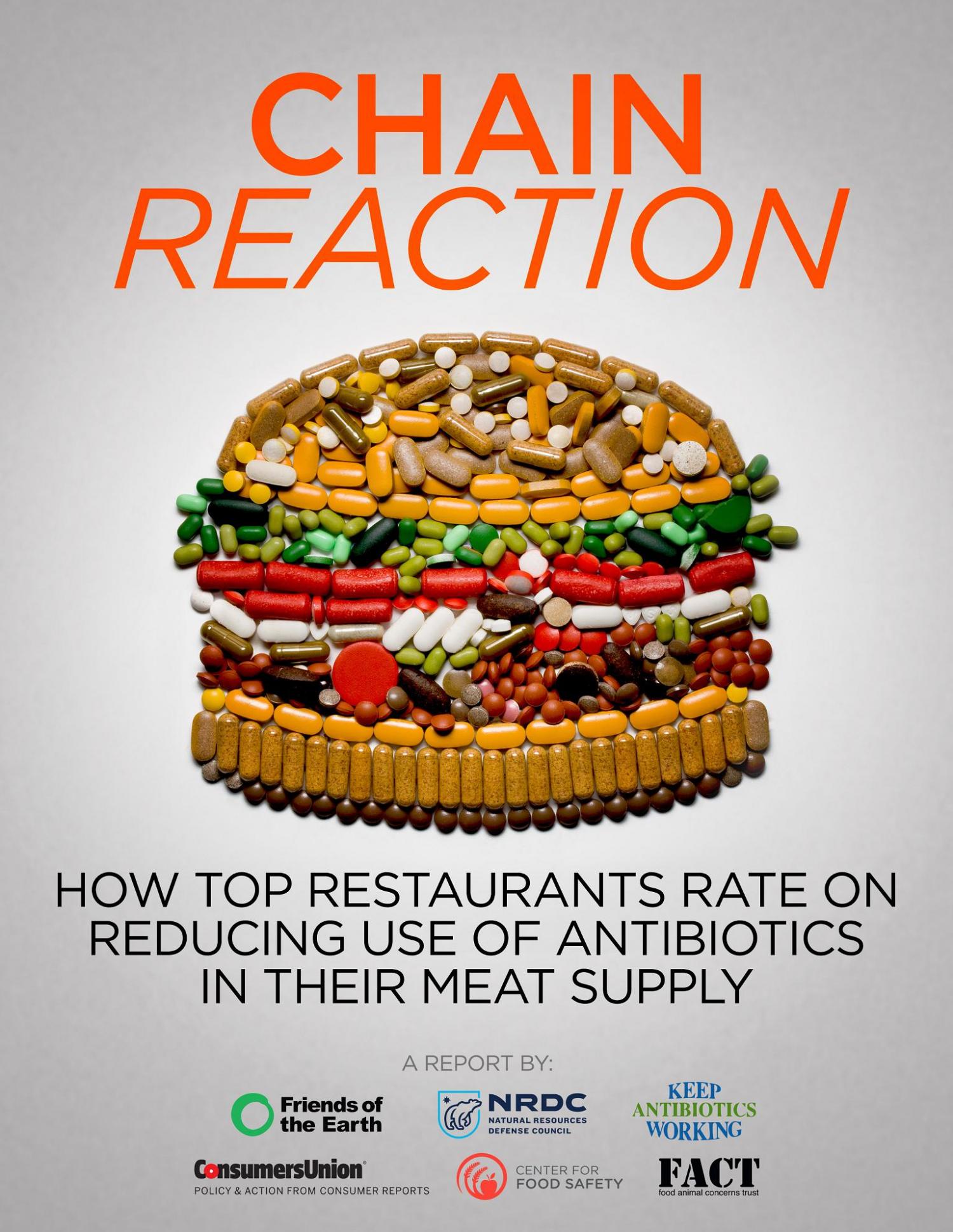Brands Address Global Water Crisis with Win-Win Strategies


By Leslie Pascaud
Only a few years ago, no one seemed to notice or care how much water it took to make things. But as the world has gotten thirstier, our water-wasting practices are coming back to haunt us. Today, 1.2 billion people, or almost a fifth of the world's population, live in areas of water scarcity, and, according to the U.N., this number will climb to almost 2 billion by 2025. Water use has been growing at more than twice the rate of population increase in the last century, and climate change has exacerbated the problem.
Another more encouraging fact is that there is still enough fresh water on the planet for all 7 billion of us. But, as the U.N. notes, this water is distributed unevenly and too much of it is wasted, polluted and unsustainably managed.
Until recently, richer nations have been less affected by water shortages; but the last few years of drought in California and Texas have put water on the radar in Middle America. In China, the problem is more acute. The Yongding River, which once fed Beijing, has run dry, along with 27,000 other rivers that have disappeared due to industrialization, dams and drought. Even worse, China’s own state media reported last year that nearly 60 percent of the country’s underground water is polluted.
Industry is the No. 1 culprit in the water crisis, and companies are under increasing scrutiny for their practices. According to an analysis conducted by engineers at Carnegie Mellon University, agricultural and industrial processes use a staggering quantity of water: It takes about 270 gallons of water to produce $1 worth of sugar; 200 gallons to make $1 worth of pet food; and 140 gallons for $1 worth of milk. The textile industry is a major culprit: According to the U.S. EPA, it takes 2,900 gallons of water to produce a single pair of jeans. Water is also a key input into the production of energy. Every kilowatt-hour of electricity we use consumes on average 25 gallons water. According to Earthworks, the water used to fracture the 35,000 active wells in the United States annually is equivalent to the annual water consumption of 40 to 80 cities, each with a population of 50,000.
The good news is that citizens, governments and businesses are waking up and acknowledging the importance of water stewardship. Corporate investments in innovative water-saving technologies are growing.
Here are five ways in which companies are pioneering potential avenues of water stewardship and, at the same time, boosting their bottom line:
1. Reducing water used in the supply chain
The best way to address water scarcity is by using less at the source. Levis Strauss was well ahead of the curve in 2011 when it launched its Water<Less initiative with a goal of reducing water used in garment-finishing by up to 96 percent.
It also did an excellent job of marketing its efforts. This past March, the company announced it had saved 1 billion liters of water since the launch and is now shooting for 80 percent of its products to be Water<Less by 2020.
Nike and Adidas have followed suit, investing in DyeCoo, a Dutch company that has developed an innovative waterless system that uses supercritical carbon dioxide instead of water in the dyeing process.
Another example of innovation comes from the recycling industry. Plastic recycling processes use a lot of water. Ak Inovex from Mexico has developed a new green technology using recycling beads that “wash” and grind plastic containers without water. In addition to water savings, this process reduces production costs by half by eliminating the need for energy-intensive dehydration and cooling.
2. Reducing or treating water pollution at the source
Four million people die each year from water-related diseases. Globally, one of the biggest water-quality problems is eutrophication due to agricultural runoff. This waste seeps into and pollutes our underwater reservoirs. Livestock farming is a major cause of this pollution.
Bion, a New York-based waste treatment company, has patented a technology combining mechanical, biological, chemical and thermal processes to capture waste and convert it into clean water for irrigation and solids for fertilizer and energy production. The technology also eliminates the pathogens found in water and can therefore help to curb a massive contributor to antibiotic resistance at its source.
3. Recycling water
Efforts in the past to entice people to drink recycled waste water have run up against what experts call the “yuck” factor.
Brewery Bear Republic, a California-based craft brewer, decided to embrace the waste. While it hasn't (yet?) put the stuff in their beer, the brewery adopted an innovative system called the EcoVolt from Cambrian Innovation to recycle and supply about 10 percent of its water requirements. The system uses a bioelectric process to treat water while extracting all the waste. The outputs provide 25 percent of its hot water heating, 50 percent of its electrical needs, and up to 25 percent of the water it needs to clean its facilities.
4. Making products or services that require less water in-use
Although industry is responsible for the bulk of water waste, individuals can also make a real dent in water conservation. Outdoor watering accounts for almost 30 percent of our water use, according to Environment Magazine. But toilets (19 percent), washing machines (15 percent), showers (12 percent), and faucets (11 percent) also use substantial amounts.
Certain washing machines use about 40 percent less water than others, so Surf and Electrolux have teamed up in India to communicate the benefits of choosing a water-saving machine. In the U.S., on-demand car cleaning service Wype positions itself as the 'Uber of waterless car washing.' Available via mobile app, Wype comes to the user and cleans waterlessly, conserving 38 gallons of water. With every completed Wype, the company donates a gallon of clean water to Charity: Water.
5. Educating/incentivizing consumers to save water.
Many of us are familiar with OPower’s method of swaying consumers to use less electricity by showing their energy use versus their neighbors directly on the monthly statements. WaterSmart does the same thing with water use. Home Water Reports are sent to utility customers via direct mail or email with information on how much water they are using. A smiley, neutral or worried water droplet icon lets them know how they are doing compared to neighbors. The reports also include personalized tips for reducing water use, resulting in a reduction of 5 percent consumption on average.
Shokubutsu Hana, a personal care brand from Japanese company Lion, found an ingenious way to combine water clean-up with education. It recently mounted the first ever ‘Water Billboard’ in the Pasig River. The billboard was made of a system using Vetiver plants (Chrysopogon zizanioides), which can clean up to 8,000 gallons of water per day. Made to float on water, the billboard didn’t just communicate HANA’s message – it actually cleaned wastewater in the rivers where the billboard was placed.
As a new water mentality seeps into the public psyche, forward-thinking brands and businesses will need to use their best technological chops to address the pressing water crisis. Brands that think their water impacts have no consumer relevance will quickly discover, as did Coca-Cola in India and Nestle in Canada that people are increasingly recognizing the intrinsic value of this vital resource. Smart players will find creative ways to leverage their water conservation investments to improve their bottom line while building trust with consumers and improving their brand image in the process.
Image credit: Flickr/Kecko
Leslie Pascaud is executive vice president of branding and sustainable innovation at Added Value. Leslie has spent the past 15 years at Added Value helping clients across sectors and geographies grow their businesses through better brand positioning, innovation, and portfolio strategy. She helped to develop over a dozen successful products, services and brands for clients as diverse as Colgate, Pernod Ricard, Tefal, and Yoplait.
Founder of Added Value’s Branding for Good practice, Leslie has worked with the likes of Ikea, Danone, Shell, AT&T, and many other clients to leverage sustainable development as a springboard to innovation. A frequent speaker on the topic of brand purpose, she is passionate about driving positive change through the power of marketing. Leslie began her career working for 10 years in advertising. She received her MBA from the Yale School of Management.
CSR, Darjeeling Tea and Multibillion-Dollar Markets


By Raminder Chowdhary
Here is something to ponder about: What is common between Greek feta cheese, Mexican tequila, Basmati rice, bourbon whiskey, Persian carpets, and Pinggu peaches?
It’s not an easy one, and I won’t keep the suspense. These are very successful products known globally for their geographical origin and for characteristics linked to that origin. The quality and reputation these products enjoy is essentially due to their place of origin. Climate, soil, local community skills, and traditional knowledge and practices all create a strong bond between such products and their geographic origins. Most often, in addition to geographic concentration of such products, the indigenous communities are the custodians of the “process” know-how.
Are you trying to think of some other products that fit this definition? Alphonso mangoes, Rocquefort cheese, Porto, Havana, Swiss watches, Feni from Goa … and the list goes on. Oh, missed one of my favorites – Darjeeling tea.
Over the past decade, tremendous attention has been given to recognition and protection of such products through the mechanism of geographical indication (GI). A geographical indication is a sign used on products that have a specific geographical origin and possess qualities or a reputation that are due to that origin. World Trade Organization members under the TRIPS Agreement have an obligation to protect GIs.
Now do you see what I am getting at? The real attraction to preserve and protect such products is commercial rather than legal. As discerning consumers across the globe ascribe certain characteristics and quality to products based on their origin, sales have sky-rocketed and multibillion-dollar markets have emerged. Sales of GI-protected products like feta and Rocquefort cheeses are nearing $8 billion; champagne $5 billion; bourbon whiskey $9 billion, etc.
Consumers are willing to pay premiums for such products. Differentiation and brand building is relatively easy, and niche markets commanding premiums emerge naturally. Multinational corporations with global manufacturing and marketing capabilities stand to benefit from this opportunity.
Let’s talk about a specific market: India had about 250 registered GIs. My guesstimate, and please don’t ask me how I arrived at this, would be that there is a potential to protect through registration over 10,000 GIs in this culturally and geographically diverse country. Many countries offer similar opportunities.
Have you put two and two together yet? Hint: Corporate social responsibility (CSR) initiatives rarely focus on cultural and heritage preservation and hence seem to be missing out. The economic and social benefits of identifying, documenting, registering, reinforcing global recognition, and developing international marketing strategies for GI-registered agricultural products, foodstuffs, wine and spirit drinks, handicrafts, and industrial products are immense. A win-win for all.
Wake up corporations, C-suite and specifically CSOs and CSR heads. And yes, for once let us not leave everything to NGOs. Here is an absolutely ready-made opportunity to participate in the preservation and economic promotion of products linked to their unique heritage, culture and geography.
For starters, industries that are culture- and heritage-dependent could benefit most and create the maximum shared value for their stakeholders and local communities. Industries like travel, infrastructure, entertainment, hospitality could take the lead.
Image credit: Flickr/Anja Disseldorp
Raminder Chowdhary: With 20+ years in managerial roles around the World he founded One Earth Foundation - an NGO focusing on conservation of natural eco-systems, preservation of traditional wisdom and environmental education in remote hill communities. He is a regular speaker on various regional and national forums promoting the need for higher levels of corporate social and environmental participation and responsibility. In 2014 he was awarded the Metro AG Community Silver Star (India) for his efforts. He has initiated and successfully implemented numerous projects in the sectors of traditional wisdom preservation, special needs groups, soil conservation, large scale forest and lakes clean up campaigns, Students for environment initiatives at a national level, etc
London Luton joins select few with energy standard accreditation


London Luton Airport (LLA) has joined a handful of airports in the world to be accredited with the internationally recognised Energy Management Standard (ISO50001) by BSI.
The airport’s energy saving initiatives, such as the introduction of LED lighting and PIR motion sensors, have led to a reduction in carbon tonnage associated with electricity use by 342 tCO2 tonnes in the last CRC reporting year. This is despite record passenger growth and additional areas opening as part of a £100m development project.
Simon Bown, senior manager - health, safety & environment at LLA commented: “The achievement of certification has taken years of dedicated work and the accreditation for energy management puts LLA amongst only a handful of airport operators in the world. We’ll continue to work hard to reduce our environmental impact as the airport continues to grow in terms of passengers and new routes.”
How a “Mad” Scottish Woman Launched a Top Restaurant, and Social Enterprise, in Ethiopia


I recently returned from a trip to Ethiopia. I chose the East African nation as I was intrigued with the country’s history, diverse cultures and spirituality, and the impact the Ethiopian Orthodox Church has on much of its population. My destination was Lalibela, a town of 15,000 about 415 miles (668 kilometers) north of the country’s capital, Addis Ababa. Lalibaba is home to Ben Ababa -- arguably the best restaurant in Ethiopia.
One of Ethiopia’s holiest cities, Lalibela is home to many rock-hewn churches, which as far back as the 12th century were chiseled by hand from volcanic basalt. The finest architectural example, the Church of Saint George, is among the most popular pilgrimage sites for Ethiopians. Lalibela is also a base from which visitors can go trekking or view more old monasteries and churches throughout Ethiopia’s Amhara Region.
One of these famous religious sites is Yemrehanna Kristos, about 28 miles (45 kilometers) from Lalibela, a journey that takes about two hours in a 4x4 along a dirt road. As we left Lalibela, we passed by an outrageous building that soared above the hills, looking like part cooking pot, part flower arrangement. “Ben Ababa,” said my guide, “you have to go there tonight.”
And with another traveler staying at the same lodge as me, I did. I had read Ben Abeba was one of the top restaurants in Ethiopia, but we were treated to far more than a meal of Shepherd’s Pie and carrot cake. We had an evening with a fascinating woman who, on a lark, changed her life on a dime and is making significant impact on a community where economic opportunities are lacking other than in farming and the emerging tourism sector.
Susan Aitchison had a long successful career as a home economics teacher in her native Glasgow, Scotland. At the urging of a friend, “at age 57 ½,” she ventured to Ethiopia to help a friend set up a school. It was a bold move—she had a comfortable life in Scotland, had her pension sorted . . . so why did she move to Ethiopia?
“Well,” she deadpanned, “I was mad.”
Call it madness or compassion, but the hard work and patience of Aitchison and her business partner, Habtamu Baye, are paying off with the success of their restaurant, Ben Abeba. The name itself is a hybrid of the two cultures: ben is Scottish for “mountain,” while abeba is Amharic for “new flower.” And perched on a hill looking over the yellow “September flowers” that bloom annually as they foreshadow the Ethiopian New Year, Ben Abeba has the perfect moniker.
The result is a venue that is architecturally stunning while offering a menu that offers classic Ethiopian cuisine, Commonwealth fare such as Bubble and Squeak and the pasta dishes that are ubiquitous throughout Ethiopia. Ben Abeba is described in travel guides as not only the top restaurant in Lalibela, but often as the best of all in this country of 94 million.
Nevertheless, what is important about Ben Abeba is the difference it is making in the local community. First, Aitchison and Baye are committed to sourcing food locally—nothing on the menu is imported. Part of the reason is logistics. Fish is not on the menu as the closest source, Lake Tana, is almost 200 miles (320 kilometers), or a five hour drive, away. “We tried serving fish, but it is hard to keep it fresh, so never mind, we serve what is available locally,” said Aitchison.
What Ben Abeba offers locals is skills training and the opportunity to work in a field other than agriculture or manual labor. Many workers are eager to work at Ben Abeba, and it is not easy to make the cut. “I am not worried about job skills, as that is what we train them on,” said Aitchison. “What we do look for is personality and social skills. Then everything else can fall into place.”
The current class of recruits, for example, includes 10 people. For a week, they are trained on just about everything necessary to know about working at a restaurant, from hygiene to customer service. Not everyone becomes a full time employee: Aitchison mentioned that probably two within this class would be hired full-time. Everyone, however, receives a certificate upon completion of the program, which he or she in turn can present to another local business proving that they have a certain level of training and experience. Their contact information is kept on file as there is always the opportunity to work a few days in the event the restaurant needs help during the high tourist season. Currently about 40 people are employed at Ben Abeba, with the vast majority under 30 years old. Most entrees on the menu are well under 100 birr ($5).
For those who do land a full-time position at Ben Abeba, those workers make about 600 birr ($29) a month. As the monthly cost to rent a room in Lalibela is about 100 birr ($5), such a salary leaves plenty of discretionary income so that workers can save for their future or an eventual investment in education. In comparison, a farmworker or manual laborer clears about 100 birr monthly. A job with Ben Abeba is a big step forward for many of these workers. Many are from the countryside, where they are often discouraged from moving out or continuing their education as their families insist they work on the farm.
Aitchison’s commitment to the Lalibela community reaches beyond the restaurant. Several years ago she set up a scholarship fund, which supports locals striving to extend their education. The restaurant financially supports local youth soccer teams as well. The hill on which Ben Abeba sits had long been stripped of trees for firewood, but has since been replanted with over 30,000 trees, many of which produce fruit.
Although Aitchison was largely self-deprecating and modest about her accomplishments, the fact is that she has founded a social enterprise that offers hope and is building a stronger community, while offering visitors the chance to learn even more about one of the oldest and complex civilizations on earth. In the end, she is leaving a legacy far more meaningful than the former teacher had ever imagined.
Image credits: Leon Kaye, Ben Abeba
Chipotle, Panera Receive an A for Antibiotic Use


What's in your steak? A consortium of environmental and health organizations want you to know.
This week, Friends of the Earth released an unusual report, entitled Chain Reaction, that looks not at our store-bought products, but what we get when we order that hamburger, steak, rich chicken soup or other meat-based meal in a restaurant.
The organization's aim wasn't to expose excessive sodium levels or cholesterol, but something more insidious that we often don't think about when we order that plate of lasagna at a sit-down restaurant or a quick roast beef sandwich at a drive-up window.
CSR-Friendly Tax Policy: Unlocking Value and Aligning Interests


By Wayne Dunn
The best thing I ever learned about tax policy came from one of Professor Howell’s economics classes I took at Stanford Business School: “What you tax, you get less of – and what you reward, you get more of.”
It makes good sense to me, so why is it so difficult for governments to see it this way? Tax is usually regarded as punitive, and someone always loses out. But with Professor Howell’s piece of simple wisdom, everyone can be a winner. And isn’t that the whole point of corporate social responsibility (CSR)?
We are seeing some governments making CSR policy into a tax, setting minimum amounts that companies must spend on CSR, often with little thought for value and impact.
So, in case any government is considering taxing CSR, this article puts forward the case for replacing that with its polar opposite – using tax breaks to incentivize and enhance CSR to everyone’s benefit.
Now, why would any cash-strapped government give this notion any serious attention?
Well the answer’s simple. CSR searches out the synergies between different stakeholder interests – and those include government’s developmental priorities and investment attraction objectives.
So, it is in government’s interests to incentivize private-sector investments and activities that create benefits and value for them, as well as for communities and corporations.
And there are two definite candidates for this incentivization model – tax credits, and co-investment. Each offers a real carrot for CSR work, and can be implemented separately or combined to suit government policy.
And as I’ll show, each saves the government money in the long run by helping deliver more successful CSR projects and avoid money-draining loopholes, while at the same time making the country more attractive for foreign investment.
So, let’s see what exactly how these two tax breaks might look, and how they benefit not just the community projects but the governments that implement them.
Tax credits: What are they? How could they work?
In its most common form, this involves the state providing companies with a credit against tax (or royalties) owed, based on the company’s investment in local communities.
Carefully-targeted tax credits have proven to be very efficient at creating local value and benefits and, simultaneously, developing local capacity and infrastructure.
Acceptable spending areas and processes are defined by the state and normally include local infrastructure projects and a requirement for local governments to be involved in setting priorities. Some also have a requirement for local involvement in planning and execution, as well as a local content provision.
In some cases the model can be expanded to include more than one local government and/or regional governments. Some, such as Peru, provide mechanisms to involve national government departments and agencies as well.
The model can also be adapted to also include company support to health, education, local government capacity and other government priorities.
The level of tax credit can be 100 percent of what the company invests or less and is determined by government. Companies simply deduct the appropriate amounts from their taxes and/or royalties owed to the state.
Example: The Porgera Market
In 2002, Placer Dome was operating the Porgera mine in the highlands of Papua New Guinea. The government had a tax-credit policy that allowed the company and the local government to undertake local infrastructure and capital projects worth up to 35 percent of a company’s tax bill.
The local government set the priorities, including identifying and prioritizing the projects and setting local procurement requirements.
A number of projects were identified and developed including a community sports field and a local market.
They were developed with support and guidance from the company, which brought project management expertise and financing, and under the leadership of the local government. Local contractors and labor did the majority of the work.
The end result was two valuable community assets: a high-quality sports field for local teams and youth and a community market that fostered local commerce, small-scale agriculture and local entrepreneurship.
The project met a community need and priority. Financing was much more efficient than if the money had been routed through the national government and then sent back to the community for the projects.
Think of the transaction friction, potential for leakage and transaction costs if the same money had been sent from the company to the national treasury, allocated to the Local Government Ministry, and the community had to develop proposal and secure the funds back from the state to complete the project.
Anecdotal evidence at the time suggested that as much 50 to 75 percent of the funds would have been consumed/leaked/etc. before getting back to the local government and local project.
Project execution had the benefit of using the mine sites' world-class project management expertise. The mine had teams that were accustomed to managing projects such as this and the associated contracting and equipment.
Contrast that with a situation where the project would be managed by either a local government with limited project management expertise and experience, or a national government that would have to send in project management capacity from the capitol.
The end result is: Community priorities were met, and the financing and execution efficiencies enabled much more to be done and much greater impact than if the same projects had been attempted through traditional tax, allocate, finance, executive models.
Benefits
Strategic integration of corporate social responsibility into tax policy can produce benefits across a range of stakeholder interests.
Perhaps the ultimate benefit is simply a tighter alignment between government, community and corporate interests and a more efficient application of government and corporate resources to support development priorities.
Other benefits include:
Benefits to Government:
- Improved investment attractiveness because of more efficient CSR/social license process and better national and community support for key industries;
- Enhanced developmental and community/infrastructure impact from tax revenues;
- Improves local governance and capacity;
- Increased synergy and alignment between corporate CSR spending and local and national government priorities creates finance and development efficiencies.
- Structured and constructive relationships with participating companies (this can often lead to additional partnerships, collaboration and value)
- Streamlined and integrated process results in enhanced community level impacts;
- Direct participation in project identification ensure local priorities are targeted, enhances local ownership and facilitates improved local project development and management capacity;
- Improved ability to optimize local content (suppliers, labor, etc.) and improved alignment with other stakeholders.
- Improved coordination enhances impact and value at the community level and strengthens social license;
- Structured collaboration with community on key projects enhances relationship and improves understanding of community issues and concerns;
- Enables coordination of CSR spending and community infrastructure/tax credit spending, facilitating stronger local impacts;
- Provides an opportunity for increased local procurement and employment.
These are some of the general benefits to key stakeholders. Individual projects often have broader and more specific types of value and benefit emerge
The downside is minimal and mostly the inverse of some of the benefits. Some examples include:
- The national government may see the increased priority setting control of local communities as a downside;
- Risk of corporate-controlled government or companies imposing their will/priorities on weak local governments;
- Overall resistance to corporate involvement in public arena;
- National/regional/local government lack of capacity to effectively prioritize and partner with corporations.
Co-investment in development
Let’s start by understanding the synergies and where there is intersection and overlap between business, governments and the international community.
When these synergies are identified and understood governments can use tax policy and incentives to encourage corporations to target CSR budgets toward key priority areas. The challenge is to clarify and make irresistible the opportunities for making this synergy happen.
So, where do governments see their own priority areas lying?
Governments, international organizations and others have almost universally subscribed to the eight Millennium Development Goals (MDGs) that were unanimously adopted by the member nations of the United Nations in a special Millennium session in 2000. Similar uptake and adoption is anticipated for the 17 Sustainable Development Goals (SDGs) that will be adopted by the United Nations in a special session during Climate Week NYC later this month.
From the CSR perspective, corporate CSR/sustainability objectives and investments fall into seven categories: education, health, poverty alleviation, gender equality, environmental stewardship, partnership development and equity/justice.
Not all projects or companies invest in all of these, but I’ve not yet found a CSR project or activity that didn’t fit into one or more of these categories.
If you look at the eight MDGs and the 17 SDGs, you will see that they can fit into the same seven-point framework that corporate CSR/sustainability investments and activities fit into.
However, all too often the current practice is for industry’s CSR investments in these areas to be done independently of government efforts, or with limited levels of collaboration. This is inefficient and produces a sub-optimal outcome for all concerned.
For example, education and health are often key issues for local communities and a priority spending areas for industry’s CSR budgets, especially when operating in remote areas of emerging economies where deficiencies of infrastructure and reach can be significant.
Without active coordination and collaboration with governments, the impact of social investments by industry can be reduced and often negative impacts created.
To illustrate this, industry may build schools or health centers without knowing government’s location prioritization and rationale, resulting in a disruption to government plans, challenges in staffing and ongoing operations, or worse yet – the perception of competition.
Economic development and poverty alleviation are also key community priorities and easily recognizable needs. Closely linked to these are various training initiatives that seek to provide local residents with foundational skills and resources that facilitate options to improve livelihoods.
Now, all of these areas are often targeted with industry CSR budgets and regularly include collaboration with local communities and stakeholders in their development.
And they are also often targets of governmental programs as well as direct programming by NGOs and other development actors. But too often there is little coordination between the players and the ultimate losers are everyone.
When government and industry doesn’t take advantage of these synergies it means that communities receive less positive impact and fewer benefits while project funders (industry, government, NGOs and others) generate fewer benefits for greater financial outlay.
So, the solution is for governments to use tax incentives and co-investment to encourage corporate CSR investments to focus on priority areas.
One of the key challenges to successfully implementing this sort of co-investment model is that the parties, government and industry, are often not able to consummate seemingly natural partnerships.
However, tax-based incentives can be the catalyst to creating these partnerships and making them work.
For example, if the education ministry had plans for school construction in areas near a mining project there could be tax incentives such as a partial tax credit and/or increased deduction allowance provided to encourage the mining company to target some of its CSR investment to co-invest with the education ministry on their priorities.
In this example there can sometimes be additional value realized through utilizing a company’s project management capacity, similar to that described in the tax credit section.
Other areas where a similar approach could apply include health, economic development, etc.
Natural partnerships, unnatural partnerships: The industry-government partnership capacity gap
In my experiences throughout the world, the state’s ability to collaborate effectively with the private sector on CSR/co-investment in development is nearly always hindered by its lack of capacity to work with the private sector.
Departments like health, education, local government and others do not have a history of collaborating with the private sector to partner on projects. Too often individuals within the departments simply lack the experience or training to enable them to work effectively with private sector partners to collaborate on these initiatives.
The private sector also has limited capacity for working with government departments, and this combination results in valuable opportunities being missed, or projects performing poorly.
Training and mentorship have proven to be helpful at bridging this partnership capacity gap.
Conclusion
The above examples should be seen as indicative rather than exhaustive. The takeaways are:
- Companies are investing in local development as part of their social license and CSR strategy.
- These investments are often aligned with government development priorities;
- Governments can use tax policy to target and increase the developmental impact of private sector investment and operations without adding to companies’ tax burden
- This can be an efficient way of meeting developmental priorities and can produce a broad range of stakeholder benefits, including improving a country’s investment attractiveness.
Wayne Dunn is President & Founder, CSR Training Institute and Professor of Practice in Corporate Social Responsibility, McGill University. You can sign up for the CSR Training Institute newsletter here and read more from him here.
Solar Surges in the Middle East and North Africa


Editor's Note: This post originally appeared on GE's Power Conversion blog.
By Hani Majzoub
Last year was a breakthrough year for solar in the Middle East with over 30 solar projects awarded – a ten-fold increase on 2013, according to the Middle East Solar Industry Association (MESIA). MESIA also predicts that in 2015, more than 1,500 megawatts worth of solar projects will be tendered to meet the rising electricity demands set by the region’s population, which is estimated to continue growing by approximately 1.9 percent year-on-year.
Accelerating the growth of solar is the continued development of innovative technologies and services that are further driving down the cost of solar systems, offering the rapidly growing regions of the Middle East and North Africa (MENA) a valuable and economically viable energy alternative to conventional fossil fuels.
Solar gains ground
Over the last decade the MENA region has really started to harness the abundant natural energy resource which it possesses – the sun. The popularity of solar energy across MENA is largely driven from the UAE. Dubai has awarded a 200 MW solar photovoltaic power plant, introduced solar powered ‘palm trees’ as well as the Dubai Rooftop Solar program, and has increased its target threefold, upping solar’s target contribution to the energy mix from 5 to 15 percent, which means it will have 3,000 MW of solar power by 2030.
Meanwhile, last year Jordan awarded 12 solar projects, the most in any country in the region in 2014. Although it traditionally relies on fossil fuel imports to meet around 95 percent of its energy demand, the recent social unrest in the region has highlighted the risks with being over-reliant on a single energy source. To address this, last year, Jordan’s energy minister announced that several renewable energy projects with a total capacity of 1,800 MW will be connected to its national power grid by the end of 2018.
Morocco has the most ambitious clean energy target in the MENA region and is on track to have 42 percent of its installed energy capacity dedicated to renewable sources by 2020. Of that, 2,000 MW will come from solar. Furthermore, the Moroccan Institute for Research on Solar Energy and New Energy (IRESEN) last year financed six R&D solar thermal and CSP projects to drive technological advancements in the country. Last but by no means least, Egypt has also set its sights on solar, with a target of 2.3 GW of solar by 2017.
The solar opportunities and challenges in MENA
This continued drive towards solar, following the reduction in the cost of solar systems, has resulted in it being competitive with the wholesale price of electricity in many regions. The Dubai Electricity & Water Authority (DEWA) recently secured a 25-year electricity tariff of roughly 6 cents per kilowatt-hour for a 200 MW solar photovoltaic power plant. This ground-breaking cost reduction has led solar to become one of the most competitive energy sources in the region and the IEA estimates that solar will become the cheapest form of electricity between 2025 and 2030. The implementation of solar projects throughout the region is also helping to reduce carbon emissions, which, have grown so rapidly in the last decade that the average person in MENA is set to emit more emissions than the average person globally by the end of this year.
However, there are three key challenges which further technology innovations can help overcome:
1. Extreme environment
Temperatures of up to 53 degrees Celsius pose a number of technical challenges for solar power which could put a cap in growth if not addressed. And, as solar farms are usually located in remote areas of desert, with no shade or protection from the sun, with high levels of heat, dust and humidity, equipment must be designed to deal with these conditions for a sustained period of time. Liquid cooling of inverters can ensure they can withstand the heat and extreme conditions necessary. Additionally, IP65 rated equipment provides a completely sealed enclosure with no additional housing and air-conditioning required. These innovations enable the equipment to last under extreme conditions and make them perfect for hot, arid desert regions enabling a stable power delivery for an optimal financial performance.
2. Stabilizing solar on the grid
While solar is playing an increasing role in power supply, it cannot be relied upon completely due to its intermittent nature. Energy Storage solutions are still very expensive to resolve this issue. Batteries have become the holy grail not only for the solar power industry but for many other industries as well.
Further innovations around solar including Concentrated Solar Power (CSP) for example, can play a key role alongside more traditional methods such as oil and gas, in stabilizing the grid. By concentrating the heat of the sun into a far smaller focal point, such as a boiler, this heat can be stored for later. With heat building up throughout the day, this provides an ideal energy source for when the sun is no longer shining, with the boiler driving a steam turbine to produce electricity onto the grid once PV output significantly reduces. Having reliable CSP systems which can be monitored remotely, while ensuring high reliability in harsh environmental conditions, is critical to the further growth of solar and in providing greater grid stability.
3. Further reducing the cost of solar power in the region
Throughout much of the Gulf Cooperation Council (GCC), electricity and water prices are highly subsidized by governments. Abu Dhabi alone spent Dh17.5 billion (around US$4.7 billion) last year on subsidizing the cost of electricity and water. In Saudi Arabia, the government is burning nearly 900,000 barrels of oil a month in the summer of 2014 to meet high demand of electricity, which is then sold at a fraction of the cost. Now that oil revenue has dropped with the fall in oil prices, these subsidies are making a dent in government budgets. Dubai was the first to adopt cost-reflective pricing policies, and others will follow. This will push up the price of electricity and make solar, which is not subsidized, more attractive.
Despite solar power becoming competitive with the wholesale price of electricity in many regions across MENA, additional cost reductions are needed to make solar electricity fully competitive against conventional power sources in the long term. The opportunity of improving PV system costs via voltage increases on the DC side has already been successfully applied worldwide with the move from 600 VDC to 1,000 VDC large scale PV systems.
Today, new developments at GE has created a shift towards 1,500 VDC architecture and this is widely seen as the next natural step in the evolution of utility scale PV power plants, further tapping into the cost reduction opportunity. By increasing the voltage level, the inverter power station’s power rating increases proportionally and thus decreases system losses and balance of plant costs. In addition, GE’s LV5 inverters have the latest software controls ensuring optimized power harvesting and a smooth integration of power produced into the grid.
While many countries are recognizing the economic viability of solar, resolving technological issues is key to unlocking the role of solar in the global energy mix and driving it to parity with traditional energy sources.
Image credit: Flickr/Masdar Official
Hani leads the Power Conversion Sales for the Renewables Segment across the MENAT territory. In 2008, Hani joined GE Renewable Energy in Germany as a Program Manager and was instrumental in leading the strategic and operational planning for the Wind Multi-Megawatts Platform including the Growth Playbook, Session II and Operational Planning. Prior to joining GE Renewables, Hani has held a number of roles of increasing responsibility at Fujitsu Quantum Devices in Japan and Infineon Technologies (Former Siemens Semiconductors) in Germany. Hani holds an Electrical Engineering degree from the American University of Beirut and is based in Dubai.
Dear Paperless Users: The Paper Industry Wants You Back


The American paper industry has been in decline. Evites have replaced written invitations; social media and email has supplanted the written letter as the forms of communication; and catalogs are eschewed as more consumers instead just go online to their favorite brands’ web sites to order those coveted products. Even printing a boarding pass 24 hours before your flight seems passé, as most airports allow you to scan your phone at the airport security counter to access your flight.
Add the fact that many offices are now trying to go paperless, and you have an industry scrambling to recover. As quoted in Marketplace, The Paper and Packaging Board, an industry trade association, has suggested that the use of paper per capita in the United States has fallen 46 percent since 2000.
Now the industry is pushing back. The Paper and Packaging Board has launched a site that touts paper’s benefits. The campaign, called “How Life Unfolds,” showcases studies on how paper is better for learning, can forge stronger emotional connections from that wedding invitation to that saved football game ticket and also promotes the industry’s environmental stewardship.
Whether this makes a difference is the big question. No matter how one feels about the paper industry’s benefit—or detriment—to the environment, the reality is that consumer habits have become entrenched. The decline in paper consumption is less about those email signatures urging you to save a tree by that signature line urging to not print that email (who prints emails?) and more about necessity.
For example, the How Life Unfolds site is full of studies noting how paper has a positive impact on how students learn. True, there are plenty of research studies that suggest the human brain can absorb more information if a pen is put to paper rather than clacking away notes on a keyboard. But the fact is that students are changing how they learn: tablets and even smartphones are becoming the tools of learning, and schools are starting to wake up to the reality that students are favoring 21st century tactics to absorb information rather than the methods dating back to the 1800s. Students are digesting more information than ever before, and schools are adjusting to meet that challenge. And while many of us still love the feel of flipping pages in a paper book, the growing desire to reduce clutter—and the hassle of carrying too much luggage on a vacation or business trip—has led to the popularity of e-readers such as the Kindle.
It is true that the cliché of “killing trees” every time one prints is false. The vast majority of paper manufactured in the United States, as far as the paper industry has disclosed, comes from managed forests. Forested land in the U.S., in fact, is on the increase; many states have seen their forests rebound. For example, Connecticut, which had lost three-fourths of its original forests to agriculture, is now covered by 60 percent forest. Environmentalists, however, will remind you these new forests are less biologically diverse than old-growth, or virgin, forests.
But while deforestation is stalling somewhat in the U.S., it is still on the upswing overseas. And in part, the effects have been felt by American companies as paper imports have made a dent in their sales. Many of these imports have come from nations including China, Indonesia and Malaysia, where environmental laws are far more lax.
And that is where the paper industry is misguided. Rather than encourage more paper consumption at a time when more consumers are aware of the impacts of waste and are therefore trying to reduce their overall consumption, the paper industry should focus its energy on targeting the companies that are sourcing materials from endangered and illegally logged forests. After all, the occasional wedding invitation or printed report is not going to threaten the world’s forests. But instead of promoting a silly campaign of self-interest trying to guilt Americans to consume more paper, we would all be better off if we focused on companies that are behaving unethically and causing real environmental damage in poorer countries where regulations, if even existent, are ignored.
Image credit: Namazu-tron
It’s Time to Kill Cause Marketing


By Russ Stoddard
As a marketing guy who’s spent a large portion of a long career forging connections between companies and causes, I’ve been doing a lot of thinking lately about the state of cause marketing.
And I’ve come to the conclusion that cause marketing needs to die.
Harsh words from someone who’s generally congenial, but here’s why: Cause marketing, which next year celebrates the 40th anniversary of its advent as a campaign between Marriott and the March of Dimes, has become so transparently transactional and self-serving in nature that it’s less and less meaningful to those who make it work -- people like you and me, a growing segment of people who seek meaning and social good from the relationships they form with companies and their brands.
Cause marketing: A victim of its own success
In some ways, cause marketing has become a victim of its own success. It’s ubiquitous. Practically every new restaurant that opens or big brand with a product line extension promotes the “buy now and we’ll make a donation to …” mantra. The spectrum covers the full range, from a majority that’s well-intentioned to those that carry the whiff of near-shyster.
This occasions a superficial abundance of one-offs, intended primarily to juice short-term sales. If beauty is skin deep, then so too is the commitment these types of cause marketing activities demonstrate.
Enough. Me and my credit card, we’re so over it. (Sorry about that, American Express, which, by the way, actually trademarked the term “cause related marketing” after its pioneering campaign to restore the Statue of Liberty in 1983.)
People want more than one-night stands
I don’t think this approach flies with people anymore. People – I won’t call them consumers here – are looking for deeper levels of commitment in every aspect of their lives, including their purchases.
That’s why it’s time for a different take on traditional cause marketing.
We need to change the dynamic from “if you buy something” to “when you buy something … or even if you don’t.”
The good news is that corporate behavior is already starting to change and giving rise to new type of company, a purpose-driven one.
The rise of the purpose-driven company
Making a business model of this intentional act is the heart of the buy-one, give-one movement practiced by companies such as Toms shoes and eyeglass maker Warby Parker, where cause — not cause marketing — is woven into the fabric of the company and its DNA.
Companies themselves are even becoming the causes in some sense – certified B Corps, public benefit corporations and startups founded by social entrepreneurs, whose products, services or business models seek to solve social and environmental problems.
Companies are also moving beyond top-down, scattershot philanthropy by engaging their employees in volunteering and pro-bono partnerships to create enduring ties with nonprofit causes. More than being just the work end of a shovel, employees are also helping make strategic decisions about which nonprofits they engage with, and how they choose to partner with these nonprofits.
This becomes core or central to a company’s purpose and not a sales activity. Forging long-term relationships with a cause that involves capital, both human and financial, comes across for what it is: real. And people respond to real, often with their hard-earned dollars.
It’s not a transaction. It’s a relationship.
Nonprofits, in their own innocent way, are culpable too and must evolve. Nonprofit organizations need to move beyond soliciting logo-splattering sponsorships for cash. That’s transactional. They need to develop a foundation for deeper relationships where they deliver added value beyond the “one-off” to their corporate partners.
This all comes from a place of love. Really. I’ve started several nonprofits, served on numerous nonprofit boards, and helped hundreds of nonprofits raise millions of dollars.
But it’s time for change. I strongly believe that corporations have a unique and powerful ability to create social impact while at the same time delivering value in the marketplace and a bottom-line financial profit.
There’s a growing sense of corporate obligation here, but there's market opportunity, too. People are looking for companies to provide leadership in solving society’s problems. Millennials and their growing economic clout, with other generations following, are increasingly allying themselves to proactive, socially responsible brands — and rewarding these companies with their financial allegiance because of their leadership and commitment.
Corporations and nonprofits simply need to realize it’s not about sales any longer. Or donations. It’s about relationships. And as any marketer worth their salt will tell you, the latter (relationship) begets the former (sales), and is worth more on a lifetime value basis any day.
And that’s a bottom-line result that feels better, too.
What do you think?
Image credit: Flickr/Anja Pietsch
Russ Stoddard builds brands for purpose-driven companies as the founder and president of Oliver Russell.
What Procter & Gamble’s New Announcement Reveals About Its Sustainability Efforts


Procter & Gamble is serious about practicing sustainability, as recent announcements indicate. The most recent announcement concerned greenhouse gas (GHG) reductions. The company behind popular brands such as Bounty, Charmin, Crest, Dawn, Febreze and Gillette announced its new goal to reduce absolute greenhouse gas (GHG) emissions at its facilities by 30 percent by 2020.
P&G developed the goal with World Wildlife Fund (WWF). The company is also joining the WWF sponsored program, called the Climate Savers Program, which helps companies with their efforts to address climate change.
“Climate change is a global issue and we believe everyone – companies, governments, and individuals – all have a role to play,” said Len Sauers, vice president, global sustainability for P&G, in a statement. “We felt it was important to come forward with an ambitious, science-based goal to help do our part to address the challenges that climate change poses.”Back in April, P&G announced it is taking climate change seriously, stating that it “recognizes the scientific consensus linking GHG emissions and climate change.” To do so, the company is focusing on certain areas:
- Reducing the intensity of GHG emissions from its operations through energy efficiency measures in its facilities, transitioning to cleaner fuel sources, and driving more energy-efficient modes of transporting its products to customers.
- Helping consumers reduce their own GHG emissions by using its products through more efficient consumer product and packaging use and consumption, and educating consumers about reducing their GHG emissions.
- Partnering with external stakeholders to reduce GHG emissions in its supply chain by ensuring its sourcing of renewable commodities does not contribute to deforestation and developing renewable material replacements for petroleum-derived raw materials.
P&G sets goals to deliver clean drinking water to communities in need
P&G’s second most recent announcement concerns clean drinking water, an issue of high importance throughout the developing world. Clean drinking water can save lives in developing countries. P&G set a goal for its Children’s Safe Drinking Water Program (CSDW) to deliver 15 billion liters of clean drinking water to reduce water borne illnesses. P&G and its global partners have delivered nine billion liters of clean water since the program began over a decade ago.
Over the next five years, P&G will launch over 25 projects to get clean drinking water to the most vulnerable groups in developing countries, including families living in rural areas lacking access to it and malnourished children. Over 840,000 people die each year from water-related disease, according Water.org. That is a population greater than the city of San Francisco.
Image credit: P&G